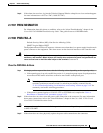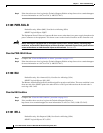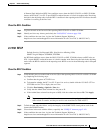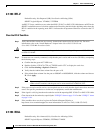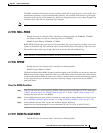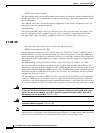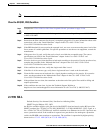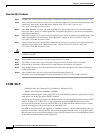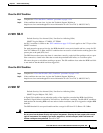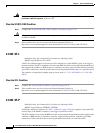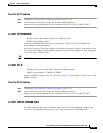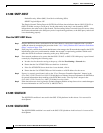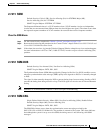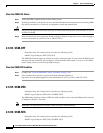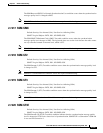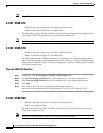
2-125
Cisco ONS 15310-CL and Cisco ONS 15310-MA Troubleshooting Guide, R7.0
Chapter 2 Alarm Troubleshooting
2.7.201 SD-V
Clear the SD-P Condition
Step 1 Complete the “Clear the SD-L Condition” procedure on page 2-124.
Step 2 If the condition does not clear, log into the Technical Support Website at
http://www.cisco.com/techsupport for more information or call Cisco TAC (1-800-553-2447).
2.7.201 SD-V
Default Severity: Not Alarmed (NA), Non-Service-Affecting (NSA)
SONET Logical Objects: VT-MON, VT-TERM
An SD-V condition is similar to the “SD” condition on page 2-122, but it applies to the VT layer of the
SONET overhead.
For path protection protected circuits, the BER threshold is user-provisionable and has a range for SD
from 1E–9 dBm to 1E–5 dBm. An SD-V condition does not cause a switch from the working port to the
protect port at the path (STS) level.
The BER increase that causes the alarm is sometimes caused by a physical fiber problem such as a poor
fiber connection, a bend in the fiber that exceeds the permitted bend radius, or a bad fiber splice.
SD causes the port to switch from working to protect. The SD condition clears when the BER level falls
to one-tenth of the threshold level that triggered it.
Clear the SD-V Condition
Step 1 Complete the “Clear the SD (DS1, DS3) Condition” procedure on page 2-123.
Step 2 If the condition does not clear, log into the Technical Support Website at
http://www.cisco.com/techsupport for more information or call Cisco TAC (1-800-553-2447).
2.7.202 SF
Default Severity: Not Alarmed (NA), Non-Service-Affecting (NSA)
SONET Logical Objects: DS1, DS3
A Signal Fail condition occurs when the quality of the signal has exceeded the BER signal failure
threshold. Signal failure is defined by Telcordia as a “hard failure” condition. The SD and SF conditions
both monitor the incoming BER error rate and are similar conditions, but SF is triggered at a higher BER
than SD.
The BER threshold is user-provisionable and has a range for SF from 1E–5 dBm to 1E–3 dBm.
Warning
Invisible laser radiation could be emitted from the end of the unterminated fiber cable or connector.
Do not stare into the beam directly with optical instruments. Viewing the laser output with certain
optical instruments (for example, eye loupes, magnifiers, and microscopes) within a distance of
100 mm could pose an eye hazard.
Statement 1056



